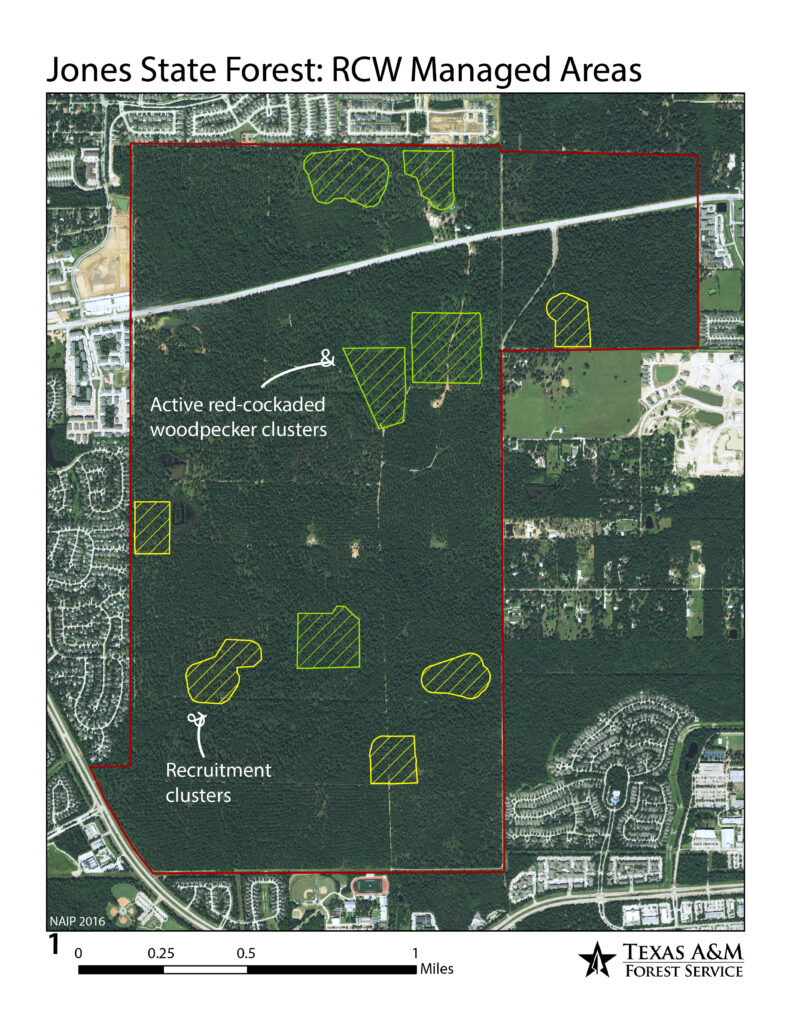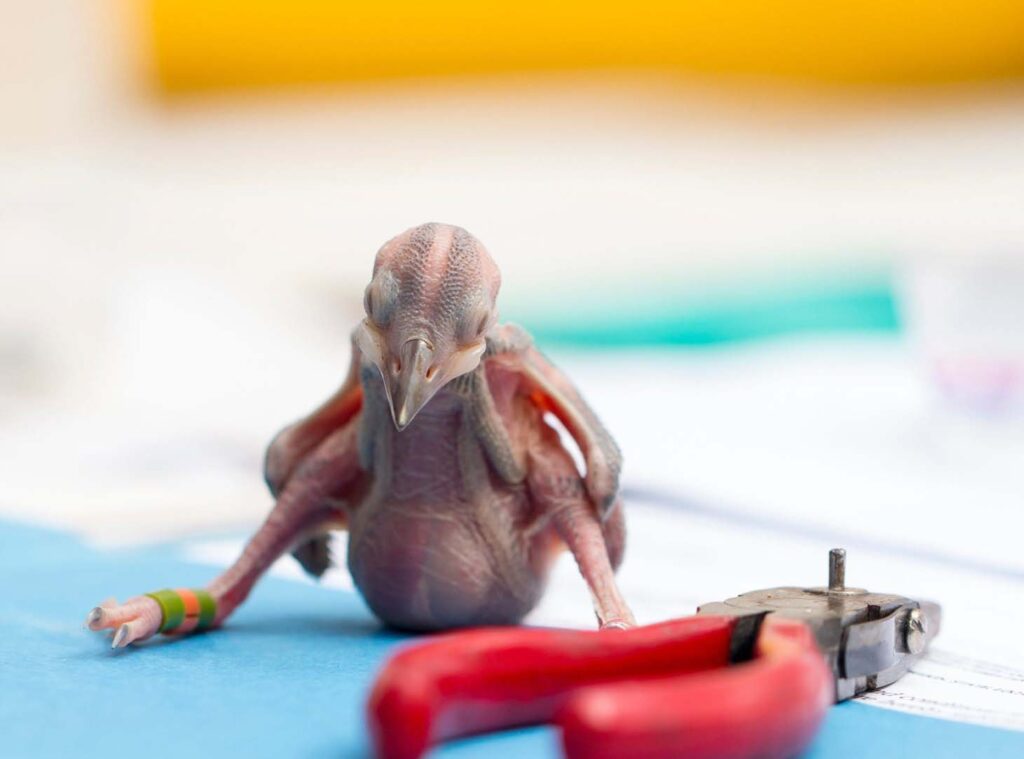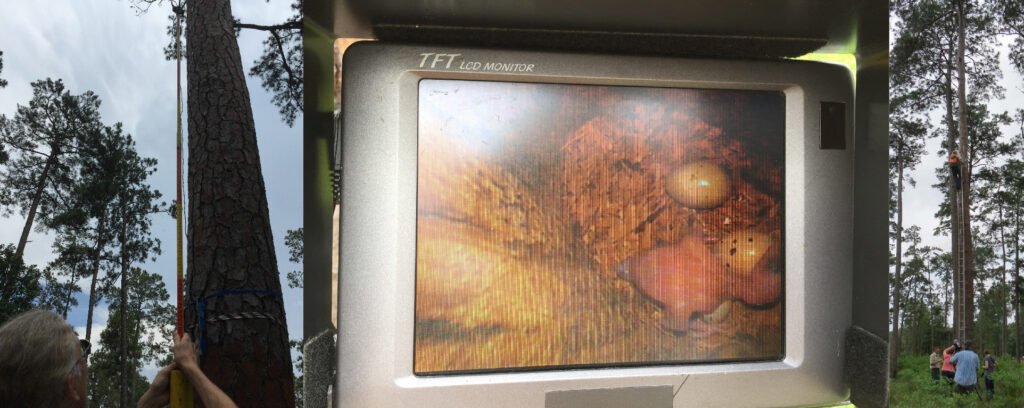The sights and sounds of spring surround us — from blooming wildflowers and buzzing bees to budding trees and chirping birds. Bird activity is one of the most noticeable signs of spring, but not all species are equally noticeable. Among the less noticeable, red-cockaded woodpeckers are an endangered species that lives in open, mature pine forests in the southeastern U.S. For more information about the species, check out this factsheet.

Texas A&M Forest Service manages habitat for red-cockaded woodpeckers on state forests. The map shows areas with RCW activity in green (active clusters) and areas with potential to support RCW in yellow (recruitment clusters) on the Jones State Forest. Wildlife Biologist Donna Work monitors the population and bands RCW chicks so they can be tracked.

Red-cockaded woodpeckers create cavities in live pine trees for roosting and nesting. Donna has a very long pole with a camera on the end that she uses to monitor nesting activity, but to actually access the nests she has to climb a ladder.

You can see red-cockaded woodpeckers at Jones State Forest, but the nesting areas are closed to the public from March 15 to July 15 to protect the birds from disturbance during this sensitive time.